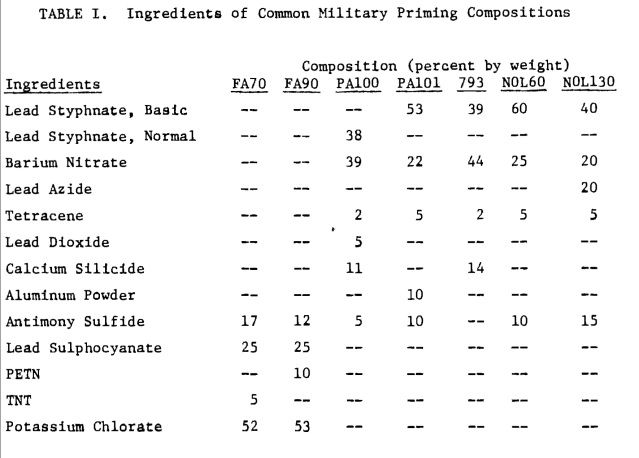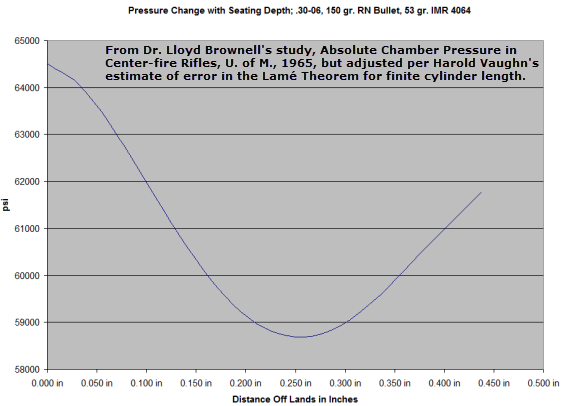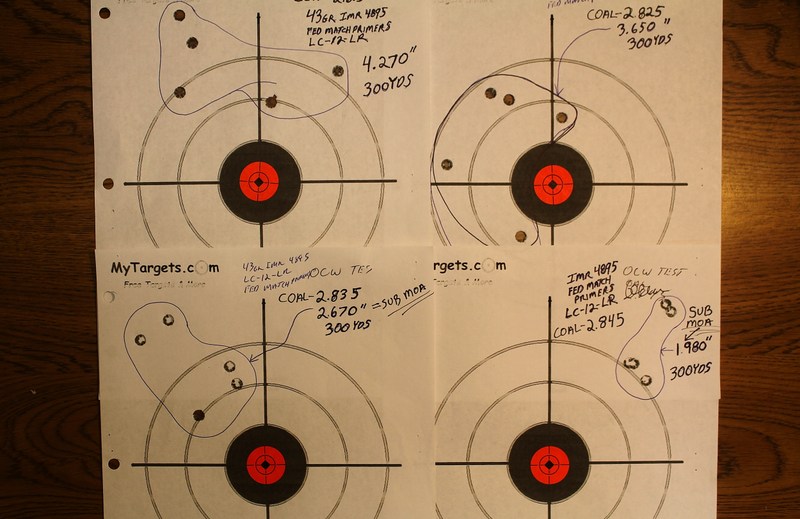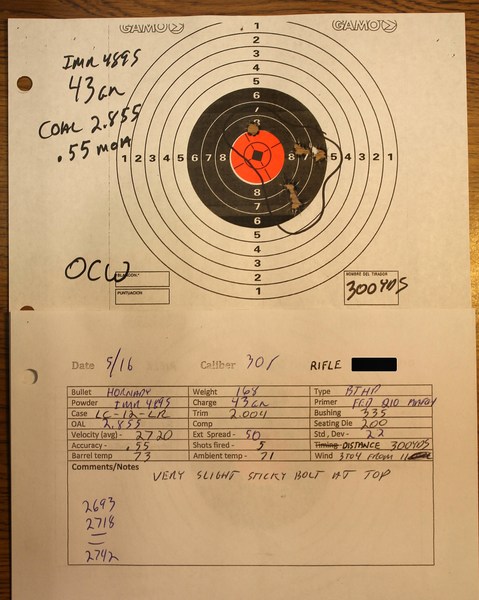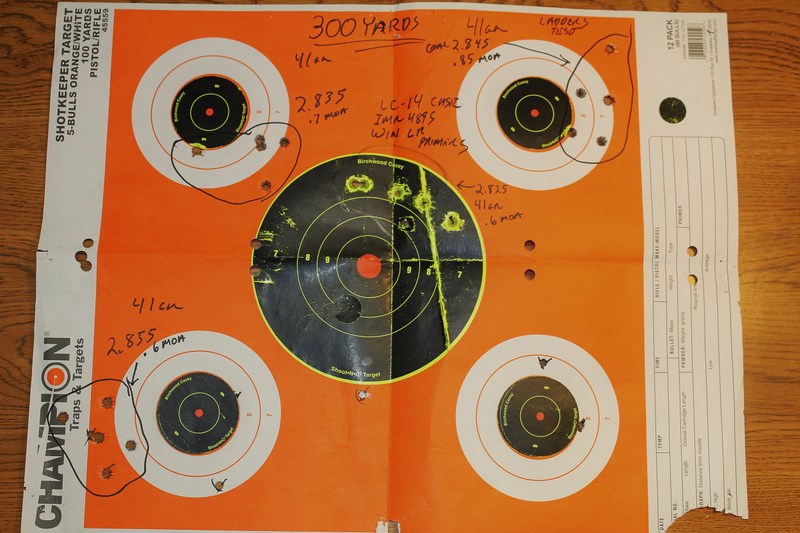I had some 308 LC-12-LR cases that had been sitting around for a while . I was saving them for a new load that may come along . Last year I found a pretty good deal on 168gr Hornady BTHP bullets . I thought what the hay this is a good time to pull out the LC-12-LR brass . I had also just bought some Federal GMM primers .
I go ahead and work up a load doing the OCW method . I find I get great results doing so with the final load being
168gr Hornady BTHP
43gr IMR-4895
LC-12-LR , H2o = 55.2gr average
Coal 2.850
Max possible COAL 2.855
That load is really good but then I thought I should try to run a new load development . This time I'll use standard LC-14 brass and Win LR primers . I have many more of each . So I go ahead and work up a load from scratch with the new brass and primers but still use the same bullet and powder .
On this load I did a ladder test as apposed to the OCW method . Now doing the ladder test I was getting sticky bolts at 42.2gr and real brass flow at 43.0gr . Big time pressure signs 1.5gr less then I tested to with the other load . I tested to 43.4gr with no issues in the OCW test but could not get past 41.8gr with the new primers and brass with out sticky bolt lifts .
At that point I found that interesting but did not feel it to be odd . I just figured the brass volume must be lower along with the primers putting out much more flash/energy .
How ever last night I decided to check the volume difference of both cases and found there to be very little difference with the LC-14 cases having slightly more volume ( LR = 55.2gr the LC-14 = 55.4gr ). I don't know but can't imagine that .2gr being a big factor which leads me to conclude the Win LR primer alone is the reason for the extra pressure .
I'm just having a hard time wrapping my head around the idea that just changing the primers caused such a big difference as far as pressure signs showing up .
FWIW the loads were the same , OK not exact . The LC-14 cases had the shoulders bumped back .001 more the the LR cases but other then that they were the same . Same COAL , Bushing , flash holes de-burred , case pep as a whole was the same .
Is it really possible the primer alone is pushing me past max pressures at well below all manuals max loads ? Or am I over looking something ?
I go ahead and work up a load doing the OCW method . I find I get great results doing so with the final load being
168gr Hornady BTHP
43gr IMR-4895
LC-12-LR , H2o = 55.2gr average
Coal 2.850
Max possible COAL 2.855
That load is really good but then I thought I should try to run a new load development . This time I'll use standard LC-14 brass and Win LR primers . I have many more of each . So I go ahead and work up a load from scratch with the new brass and primers but still use the same bullet and powder .
On this load I did a ladder test as apposed to the OCW method . Now doing the ladder test I was getting sticky bolts at 42.2gr and real brass flow at 43.0gr . Big time pressure signs 1.5gr less then I tested to with the other load . I tested to 43.4gr with no issues in the OCW test but could not get past 41.8gr with the new primers and brass with out sticky bolt lifts .
At that point I found that interesting but did not feel it to be odd . I just figured the brass volume must be lower along with the primers putting out much more flash/energy .
How ever last night I decided to check the volume difference of both cases and found there to be very little difference with the LC-14 cases having slightly more volume ( LR = 55.2gr the LC-14 = 55.4gr ). I don't know but can't imagine that .2gr being a big factor which leads me to conclude the Win LR primer alone is the reason for the extra pressure .
I'm just having a hard time wrapping my head around the idea that just changing the primers caused such a big difference as far as pressure signs showing up .
FWIW the loads were the same , OK not exact . The LC-14 cases had the shoulders bumped back .001 more the the LR cases but other then that they were the same . Same COAL , Bushing , flash holes de-burred , case pep as a whole was the same .
Is it really possible the primer alone is pushing me past max pressures at well below all manuals max loads ? Or am I over looking something ?
Last edited:

